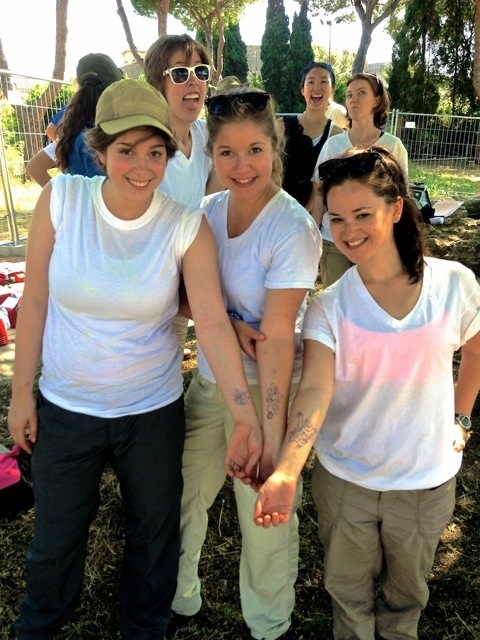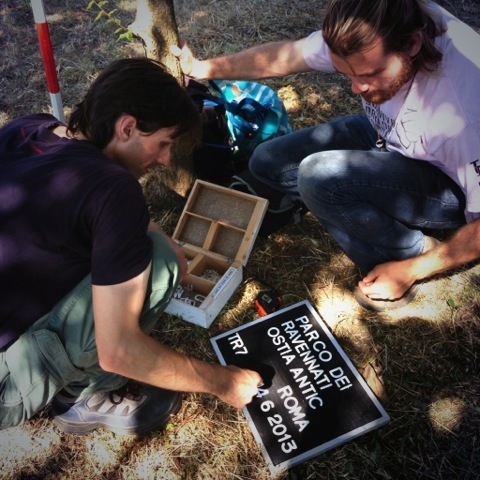Mortar and Murder: Looking Back at the 2013 Dig #archaeology
As we seek relief from Rome’s sweltering triple-digit (F) temperatures, it’s a good time to look back at six weeks of fun, hard work, and intensive learning. Here are a few things that struck me, in my capacity as Project Coordinator, about the experience.
Low injury rate. During the course of a typical season we see a handful of cuts or scrapes that require on-site medical attention, as well as a lot of first-week blisters that exhaust the supply of band-aids in no time. This year we had only one cut, thankfully, and not even one band-aid was used.
Plot twists. We started out assuming that the Roman mausoleum in Area B was, at some point after the end of antiquity, transformed into a baptistery, which was subsequently re-worked to accommodate six tombs in the Middle Ages; two bodies were duly found in one of these tombs in the fall exploratory campaign. In the summer not even one additional burial was found in the tombs, while a series of burials was revealed just below the ground surface around the edge of the mausoleum. Proof that, in archaeology, assumptions are made to be modified and abandoned.
Gastronomic adventures. This year everyone looked forward to lunch, which was prepared and served at La Fraschetta del Borgo in Ostia Antica, a stone’s throw from the site. Solideo and the staff served up 23 tasty and abundant lunches, catering to all dietary needs, including prosciutto with cantaloupe, cold cuts and cheese, rigatoni all’ammatriciana, frittata (omelette), pizza, sausage with chicory, and chicken cacciatore with potatoes. The daily dose of gelato was especially popular.
Language lessons. Every edition of AIRC’s Summer Archaeological Field School involves bilingual staff, so you can always hear both Italian and English spoken on-site. This year’s Babel had a particular feel to it. There was the lilting British accent of our Welsh topography intern, Tim Penn. There was archaeologist Larisa (“Larry”) Criscenti’s elegant and studied English. There were the participants’ gung-ho attempts to learn Italian from field director Michele Raddi’s colorful diction. My favorite moment was the attempt to explain to our Italian colleagues the subtle acoustic distinction between “mortar” and “murder.” Two very different concepts, but both very useful in a Roman archaeology field school.
– A.P.












Leave a comment